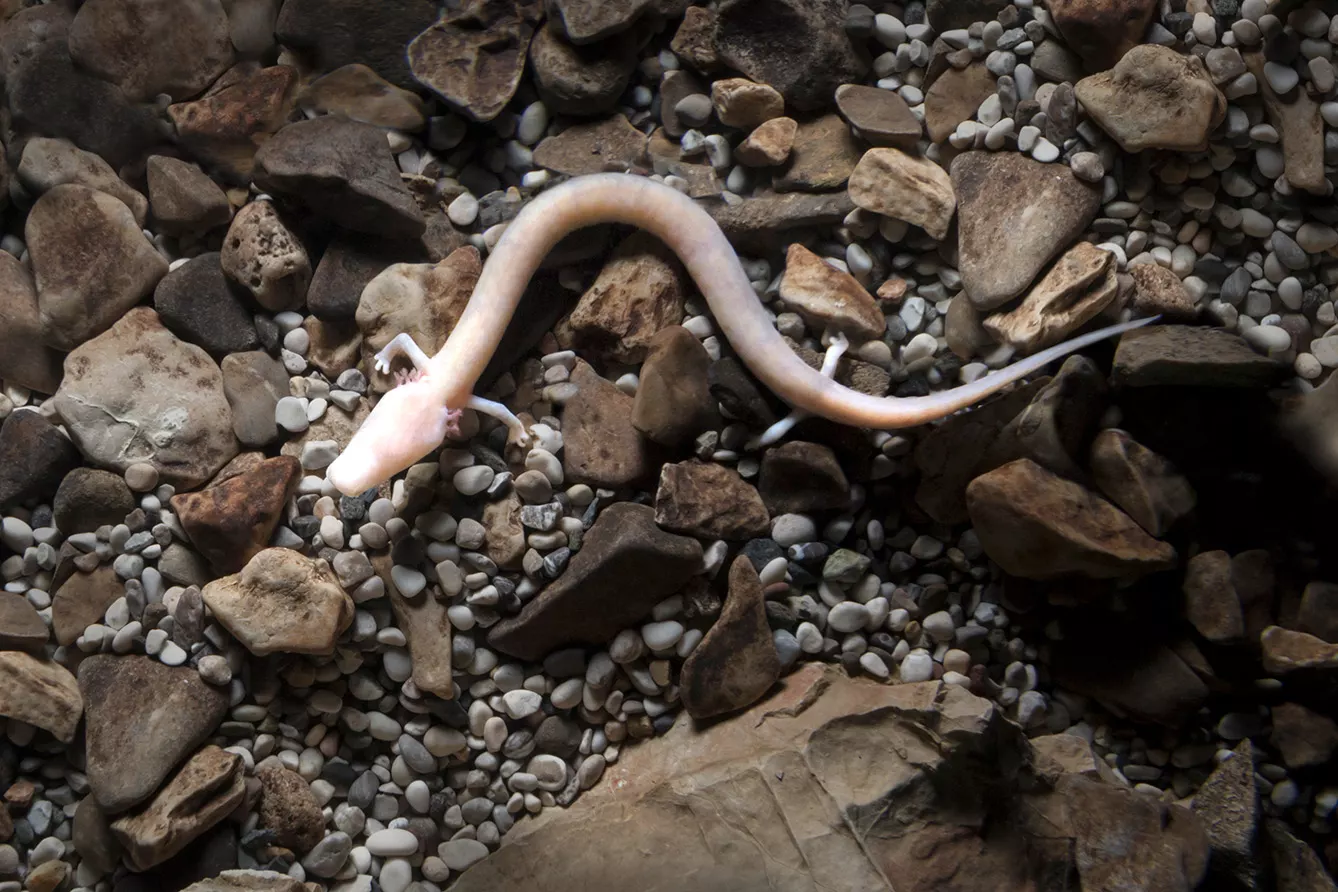The olm, also known as ‘proteus’ or ‘human fish’, is without a doubt one of the most unique creatures on the planet. Or rather under its surface. This bizarre being was initially thought to be a dragon’s offspring, but in reality, it belongs to the Proteidae family and is an aquatic salamander. It is the one and only species of its kind found in Europe, which is an exclusively cave-dwelling amphibian. For a rather plain creature, this animal developed a whole range of surprising superpowers.
Proteus, the master of adaptation
Charles Darwin appreciated the significance of the proteus in the context of his then-developing theory of evolution. The olm served as evidence that unused, hence unnecessary, organs and functions in a species eventually disappear. The proteus, living in the total darkness of underground caves, is doing just fine without the light.


So why would it need eyes? It is born with them, but gradually they are overgrown with a fold of transparent skin. The complete lack of pigmentation (again – what would be the use, since it does not come to the surface unless washed away by a flood) makes its porcelain color reminiscent of human skin – at least, a very pale human. That’s where the creature took its common name from(the human fish).
Forever young human fish
For such a small animal, the olm displays a whole range of extraordinary abilities. How else could it survive in Egyptian… oops, Slovenian darkness for an astonishing one hundred years (sometimes, perhaps, even more – the scientists are still trying to find a decisive answer)? Mother Nature, being just as she is, replaced the redundant sense of sight, instead sharpening the proteus’s other senses: smell and hearing, as well as giving it such amazing skills as the ability to detect electric currents and Earth’s magnetic field.
The human fish also reaches a record life span, but while it does, it does not age at all. It remains a juvenile in its larval stage, although at some point it reaches sexual maturity. But not a single wrinkle!
Proteus: small but mighty
The olm is a predator, but don’t worry – it doesn’t bite. It swallows its victims whole. It feasts on small aquatic organisms, plankton, and small crustaceans without chewing. This way it takes longer to fully digest its meal.
But get this! When there is a shortage of supplies and nothing to hunt for, this smart guy regulates its metabolism and goes into standby mode, which can last up to several years! Simply by mastering the ability of… doing nothing. In addition, it is a very pragmatic and economical creature – knowing that provisions can be fragile, sexually active males defend their territories by only displaying their superiority. No fighting, just peace and love. What an amazing behavioral adaptation to life in harsh circumstances!
Endangered icon
The Slovenian olm has already become a recognizable cultural symbol of this country. Its likeness can be found in the logo of Postojna Cave, and the name ‘human fish’ is often used in branding – e.g. of a popular craft brewery in Vrhnika. It was also depicted in one of the Slovenian tolar coins and served as an inspiration for the name of the oldest Slovenian popular science magazine – “Proteus,” first published in 1933.
Unfortunately, because it is very difficult to observe and record olms in their natural environment, no one knows for sure how many human fish are out there. This makes it difficult to classify proteus as an endangered species, although several organizations are fighting for it. Since human fish needs clean water to thrive, and more contamination is reaching its dwellings, it is deduced that it must be diminishing in numbers.
Climate change is sure to also affect their lives. Their habitat, safe and untouched for over 20 million years, is now dramatically changing. Let’s hurry to see the human fish, a T-Rex among the salamanders before it shares the fatal fate of dinosaurs…







